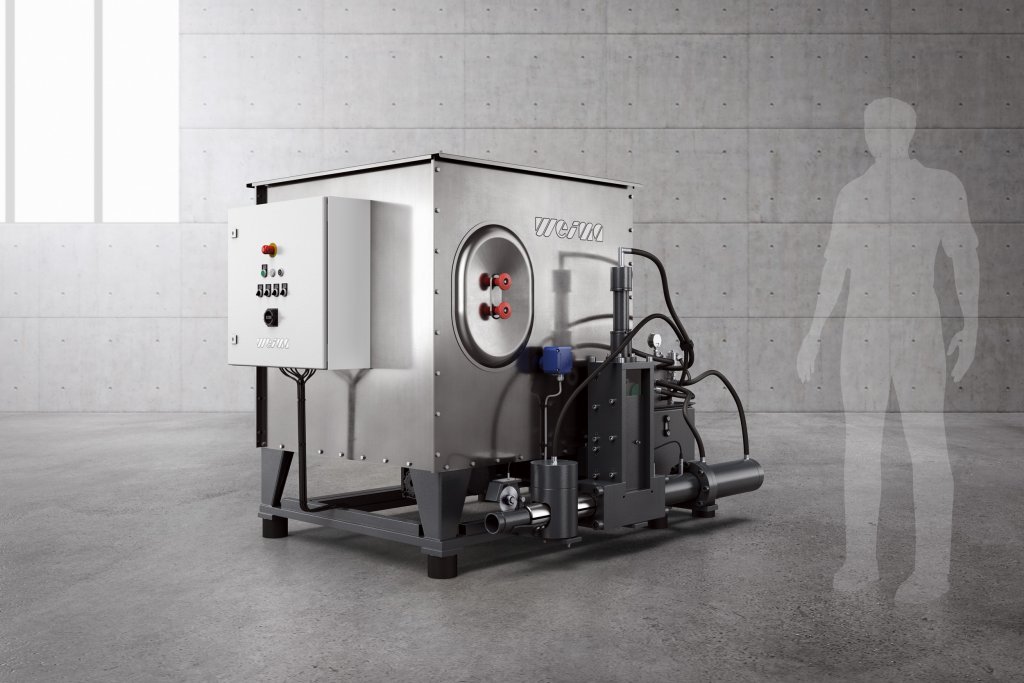The International Woodworking Fair, like most other trade shows and conferences, was canceled on account of the global pandemic and safety concerns. Though they acknowledge the need to take this step, the WEIMA sales team finds it bittersweet that they will not get the opportunity to shake hands with clients, dealers, and future customers this year in Atlanta. Show or no show, it's always the perfect time to talk about wood waste size reduction.
WEIMA America, Inc. has been exhibiting at IWF for nearly two decades. The extensive line of wood grinders and briquette presses are on display and in operation on the show floor. The wood industry is alive and manufacturing despite the circumstances, and WEIMA is consistently ready to discuss wood waste size reduction options for operations large and small.
Setting the scene for woodworking in 2020
The spread of COVID-19 has caused many operations to reanalyze and rearrange their production practices. Manufacturers worldwide are reconsidering the physical space between workers and machine stations. The workflow on the production floor has encouraged wood shops to look inward at their wood waste disposal practices. Strategically located size reduction machinery keeps woodworking operations focused on production and not on scrap handling.

A wood grinder handles bulky wood scrap on site.
The ROI of environmental machinery
Wood shops are no doubt reexamining budgetary numbers, especially during times like these. While many people see the waste disposal process as an afterthought of the production process, WEIMA encourages companies to think backwards.
Wood waste is often bulky, and dumpsters are expensive. Filling a dumpster with shredded wood maximizes the space within the dumpster, saving companies money from the very beginning. This also results in fewer scrap wood piles around the facility.
Once the wood is shredded, it can be discharged from the workstation via belt conveyor, screw auger, or a pneumatic discharge system, making this process virtually hands-off. When a grinder or briquette press manages the manufacturing waste, freeing up employees to focus on production instead of hauling scrap across the facility.

WEIMA’s newest addition to the horizontal shredding line has a wider rotor to eliminate pre-cutting scrap and increase efficiency.
The newest additions to WEIMA’s size reduction machinery line
WEIMA has long been excited about introducing the newest addition to the horizontal shredding line—the Horizontal Beaver 600—to the wood industry. This machine is very similar to the tried and true Horizontal Beaver 300 with one exception– this model comes with a wider rotor width of 600mm instead of 300mm.
The increased rotor width enables companies to shred wider and/or larger boards at lower capacities without pre-cutting each piece prior to shredding. This type of shredding machine is ideal for companies with lower scrap volume and an increased need for space savings. This type of shredding technology is also an environmental investment, as it allows companies to reintegrate or dispose of the shredded wood scrap more responsibly and efficiently.
The comeback kid
WEIMA is also celebrating the return of a longtime favorite to the shredding line– the Beaver 400. This hand-fed machine has been a part of WEIMA’s line of size reduction equipment for years. Woodshops nationwide are opting for small, efficient shredders to be strategically placed near machines that generate wood scrap within their operations. They choose this option instead of installing a central shredding system that requires scrap to be carted around a production plant prior to disposal. For this reason, the Beaver 400 is regaining its popularity due to its robust shredding capabilities and smaller footprint.

The material flow of the WEIMA WLK series single-shaft shredders.
Wood grinders for operations of all sizes
Occasionally a hopper-fed grinder is a better option for certain geometries of wood waste. While a centralized wood grinder within a plant can be effective, many woodworkers are benefitting from multiple smaller shredders placed strategically around a shop. Positioning small, powerful wood shredders directly next to machinery that creates wood waste eliminates the need to move the scrap, thus increasing productivity. Stations with CNC machines and rip saws are ideal locations for these machines.
There are options for wood shops with larger scrap pieces that can eliminate the pre-cutting of scrap. Regardless of the size of the machine, the WEIMA team can discuss options for further automation via conveyors, air systems, and screw auger discharge options. The WEIMA WLK single-shaft grinders range from large to small and can be customized to fit the requirements of specific applications.

The WEIMA C150 briquette press has a small footprint but a big impact in terms of
space savings.
Solutions for dust and shavings
Dust is a natural byproduct of woodworking, and it is one that can be managed with through briquetting. A WEIMA briquette press can connect directly into an air system, making this another hands-off approach to wood waste management. WEIMA briquette presses are equipped with an auto-on/off feature that puts the machine in standby mode when the hopper is below a certain capacity. This machine is ideal for wood waste with a moisture content between 3% and 18%. No added binders are used in the formation of briquettes. Some operations in cooler climates opt to use these briquettes as an alternative fuel source to heat their shops.

WEIMA matrix-style briquette press compresses MDF dust.
Special IWF “no-show” pricing
Though 2020 has thrown many curveballs, WEIMA wants to carry on one tradition: show floor special pricing. Through the end of the month, WEIMA is offering special pricing on in-stock and stock-ordered machinery through the end of August.
The official WEIMA Youtube channel has examples of the varieties of scrap processed around the globe using a wood waste grinder or briquette press.
Now is the perfect time to join the WEIMA family!